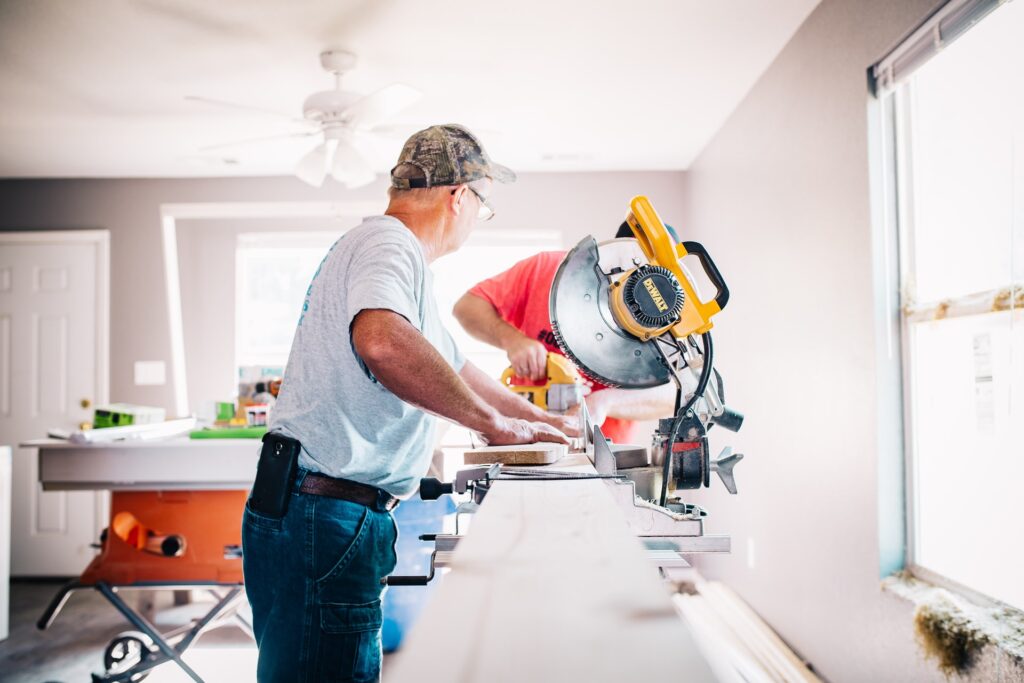Long-term Repair Plan(長期修繕計画)は建物の生涯に渡る工事計画書
建物は建った瞬間が一番新しく、徐々に劣化が進んで行きます。
建物だけではなく、すべてのものは同じかも知れません。時間を重ね新しくなっていくものはなく、おおよそのものは一方的に古くなっていきます。
古くなっていくのは見栄えだけではありません。内在・内蔵している機能であるとか、コンセプトだったりします。物理的劣化、機能的劣化、社会的劣化などと呼ばれます。人間も年齢を重ねると身体のあちこちに不具合が出てくるものですし、現代医療の発展をもってしても、老化は避けられません(いつか老化を止める、または若化していく技術や医療が産み出される可能性はありますが)。
人間の話であれば、定期的に健康診断をし、必要な予防をし、病気になればお医者さんに診て貰い、必要があれば休養をとったり、薬を飲んだり、治療したり、入院したり、といった事が容易にイメージ出来ると思いますが、建物になると話が少々異なるようです。
建物も人間よろしく老化に従って漏水が起きたり、空調が止まったりといった不具合が発生します。人間ならちょっと休みましょうという事も可能ですが、建物は動いたまま治療をしなければならないという事が起こります。事務所や店舗テナントが理解を示し休業すれば治療もしやすいですが、なかなかそうも行かないのが現状です。ただでさえ空調の効きが悪く、不快な環境で仕事をしているテナントにお邪魔して補修工事を実施し、最中の手違いで停電でも起きようものなら、不快感は怒りに変わってしまう事でしょう。
このような事を100パーセント避けるのは至難の技です。人間が定期的に健康診断していても、突然の発病が起きないとは誰も保証出来ないのと同じです。しかし、定期的な健康診断や人間ドックの受診などにより、病巣の早期発見に繋がる事もまた事実です。
The Role of Long-Term Repair Plans – 長期修繕計画の役割
建物の長期修繕計画は、人間で言えば健康診断や人間ドックの結果に基づき、治療や手術のスケジュールを予め明確にし、費用化(予算化)したものです。
例えば外壁改修は15年目に北西の範囲で3千万円、エレベータの更新は30年目に2台分で6千万円、といった具合です。これらを予め見込み、時期が来れば、情況に応じて工事を進めます。モノの劣化具合は大方予想が付くので、起きてからでは手遅れになる前に、定期的に治療・手術をしていきましょう、という事です。
マンションにお住まいの方は、管理組合がコンサルタントや管理会社と契約して長期修繕計画の立案や実施を進めているはずです。オフィスビルでは、プロパティ・マネジメント業務委託の有無で異なるかも知れませんが、いざビルを売却する際には、過去の工事履歴と長期修繕計画が重要となります。買い手からすれば購入費用を抑えたいのが本音なので、今年購入しても来年空調設備の総取替が必要だという事になれば、金額値下げ交渉の材料と出来ます(もしくは前オーナーで更新するよう交渉する等)。
プロパティ・マネジメントの役割は、新築時もしくは竣工後の適時に長期修繕計画を立案・見直しをかけ、将来費用を精緻化していく事(不動産事業収支やマンションの修繕積立金の算出に必須)、時期が来たら必要な工事をマネジメントする事(業者選定、工事費用査定、工事管理等)、テナントや居住者への周知説明などがあります。
PROPUPは、このプロパティ・マネジメントを特別な事ではなく、一般的なものにしたいと考えています。対象となるのはプロパティ(資産)ですので、マンションやオフィスビルに限りません。戸建住宅や建物の集合としての街並みにも適用出来る考え方です。
長期修繕計画はプロパティ・マネジメントの一部にしか過ぎませんが、資産を守る為の出発点であり、不動産オーナー自身がしっかりと意識を持つ事が重要です。

A long-term repair plan is a construction plan that spans the life of a building.
Buildings are newest at the moment they are built and gradually deteriorate. It is not only buildings that deteriorate, but everything else as well.
Nothing gets newer and newer over time, and almost everything gets old one way or another.
It is not only the appearance that ages. It can be an intrinsic or built-in function or concept. It is called physical deterioration, functional deterioration, social deterioration, etc. As humans age, we also develop defects here and there in our bodies, and even with the development of modern medicine, aging is inevitable (although it is possible that technology and medicine will one day be produced that will stop aging or rejuvenate it).
If we are talking about human beings, we can easily imagine that we need to have regular medical checkups, take necessary precautions, see a doctor if we get sick, take rest, medicine, treatment, and hospitalization if necessary, etc. However, the story is a little different for buildings.
As buildings age, so do we, and problems such as water leaks and air conditioning stoppages can occur. While it is possible for a human being to take a break, a building may need to be treated while it is still operating.
It would be easier to treat the problem if the office and store tenants understood and closed their offices, but this is not always possible. If you have to go to a tenant who is working in an uncomfortable environment with inefficient air conditioning to perform repair work, and if there is a power outage due to a mistake during the repair work, the discomfort will turn into anger. It is extremely difficult to avoid such a situation 100% of the time.
Just as no one can guarantee that a person will not suddenly become ill, even if he or she has regular medical checkups. However, it is also true that regular health checkups and physical examinations can lead to the early detection of disease.
The Role of Long-Term Repair Plans
A long-term repair plan for a building is based on the results of medical checkups and physical examinations, and the schedule for treatment and surgery is clarified and costed (budgeted) in advance. For example, the repair of exterior walls is 30 million yen for the northwest area in the 15th year, and the renewal of elevators is 60 million yen for two elevators in the 30th year, and so on. We estimate these costs in advance, and when the time comes, we proceed with construction according to the situation. Since the deterioration of things can be predicted for the most part, it is advisable to perform periodic treatments and surgeries before it is too late. If you live in a condominium, the management association should have contracted with a consultant or management company to develop and implement a long-term repair plan. For office buildings, it may be different depending on whether property management services are outsourced or not, but when it comes time to sell the building, the past construction history and long-term repair plan are important. Buyers are interested in keeping down the purchase cost, so if they purchase the building this year but find that the HVAC system needs to be replaced next year, they can use this as a bargaining chip to lower the price (or negotiate to have the previous owner update the system, etc.). The role of property management is to plan and review long-term repair plans at the time of new construction or after completion of construction in a timely manner, and to refine future costs (essential for the calculation of real estate business income and expenditure and the reserve for condominium repairs), and to manage necessary construction work when the time comes (selection of contractors, assessment of construction costs, construction management, etc.). PROPUP aims to make property management a common practice rather than a special one. PROPUP is not limited to condominiums and office buildings. This concept can also be applied to detached houses and streetscapes as a collection of buildings. Long-term repair plans are only one part of property management, but they are the starting point for protecting assets, and it is important that property owners themselves have a firm awareness of this.
- AM/PM/BM/LM/FM/CM
- 工事区分について – Construction Classification
- About Long-term Repair Plan – 長期修繕計画
- 収支計算の際に大切なこと
- グレードアップについて – About Upgrades
